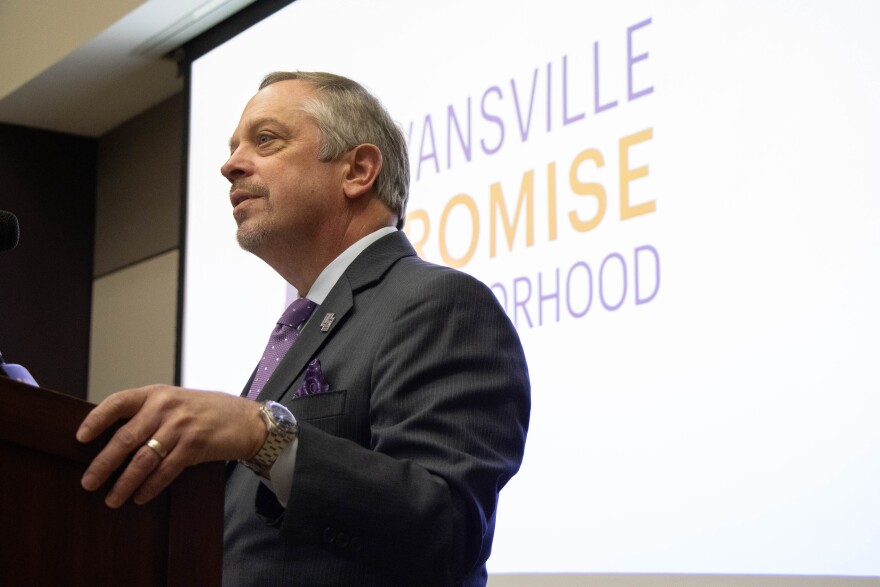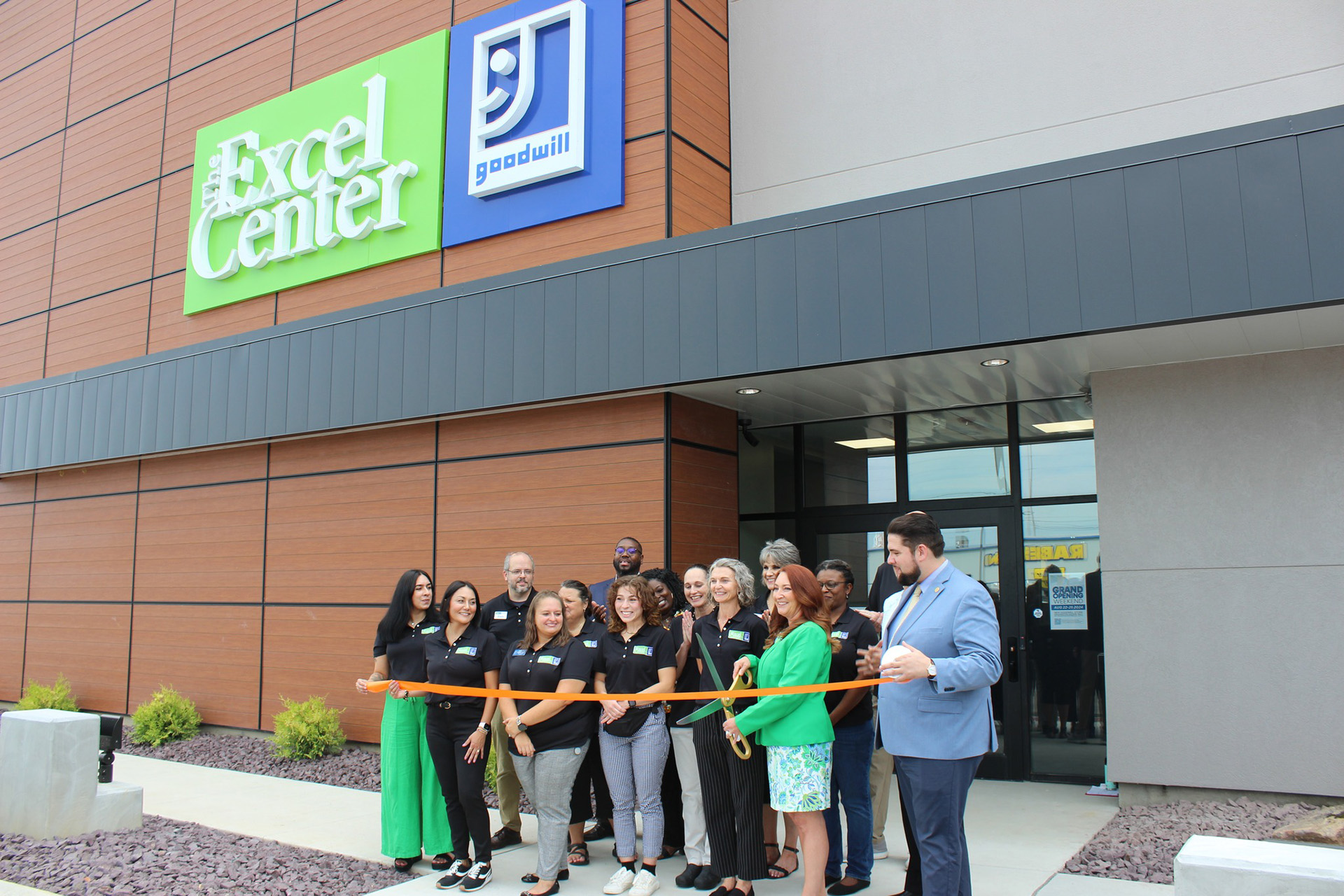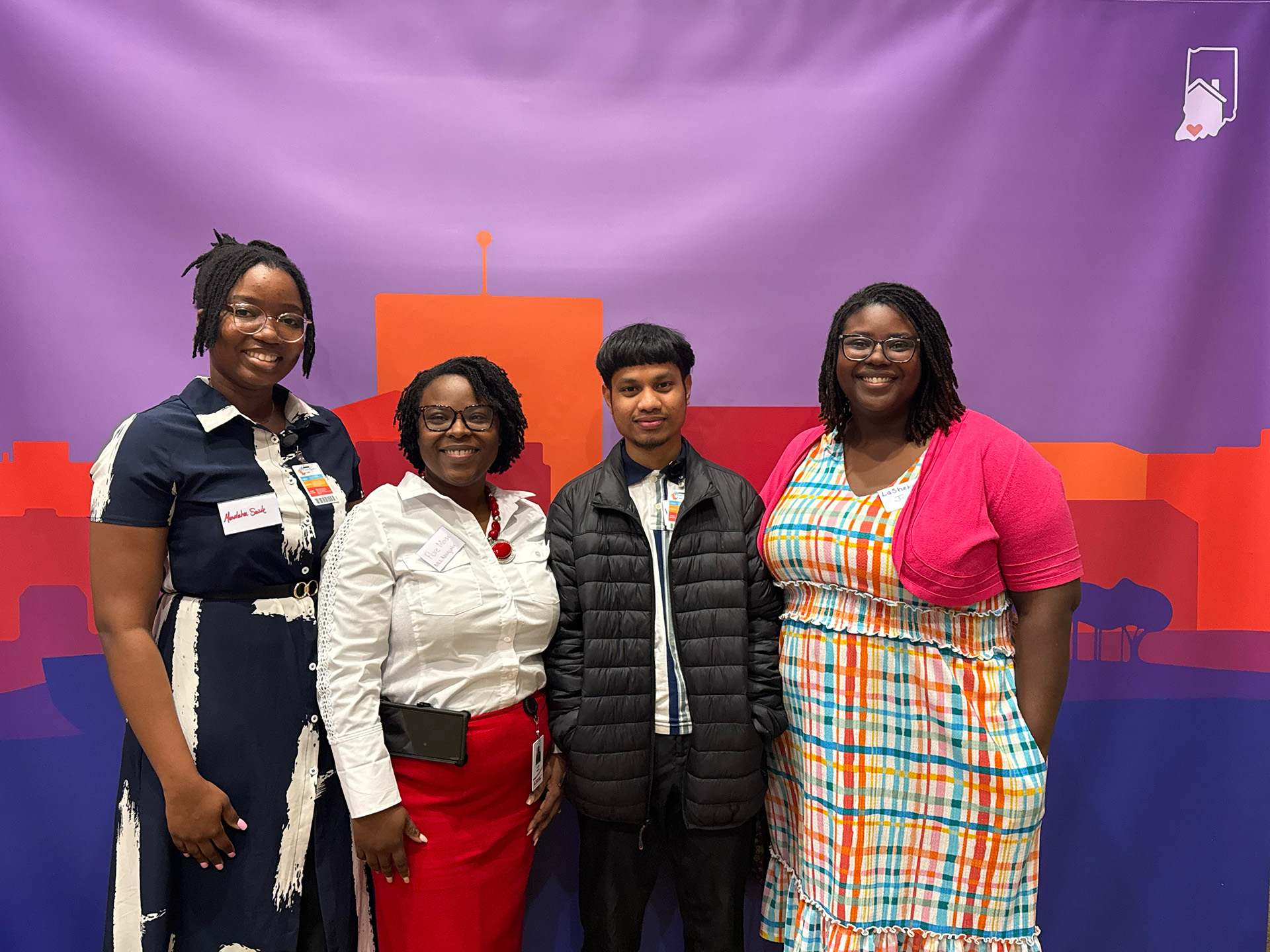Evansville Promise Neighborhood
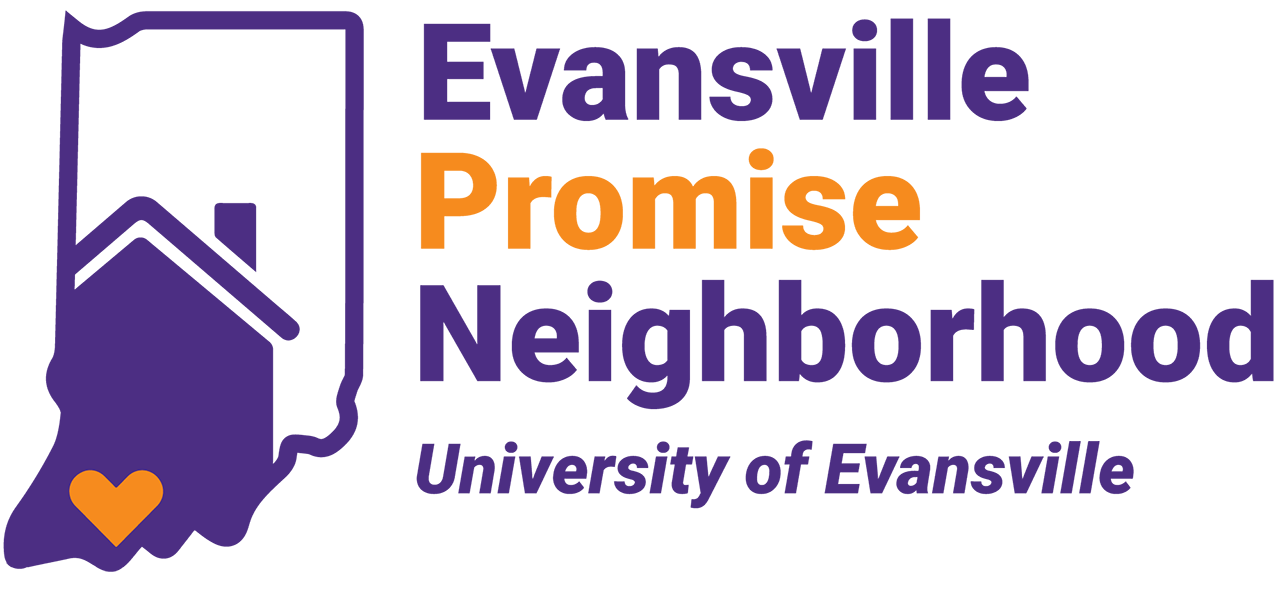
About the Evansville Promise Neighborhood
Evansville Promise Neighborhood (EPN) is a place-based initiative located in an area of Evansville with the most potential for positive transformation. EPN focuses on building strategic partnerships that unlock resources and empower residents to lead the change they envision for their community.
Funded by a $30 million grant from the U.S. Department of Education and inspired by the Harlem Children’s Zone, EPN is more than a funding initiative—it’s a collaborative approach to community transformation. Through the coordinated efforts of 23 partner organizations, EPN brings together families, schools, and community groups to co-design solutions that help students thrive from cradle to career. For more information, please view our Comprehensive Guide to the Evansville Promise Neighborhood booklet.
Our work is organized across four strategic focus areas, known as pipelines.
- Early Health and Kindergarten Readiness
- Student Achievement and Success
- Postsecondary Access, Success, and Workforce Readiness
- Neighborhood and Community Revitalization
EPN serves a defined area of 12 census tracts in Evansville, Indiana, and includes six focus schools:
- Evans School
- Delaware Elementary School
- Lincoln School
- Lodge Community School
- Glenwood Leadership Academy
- Bosse High School
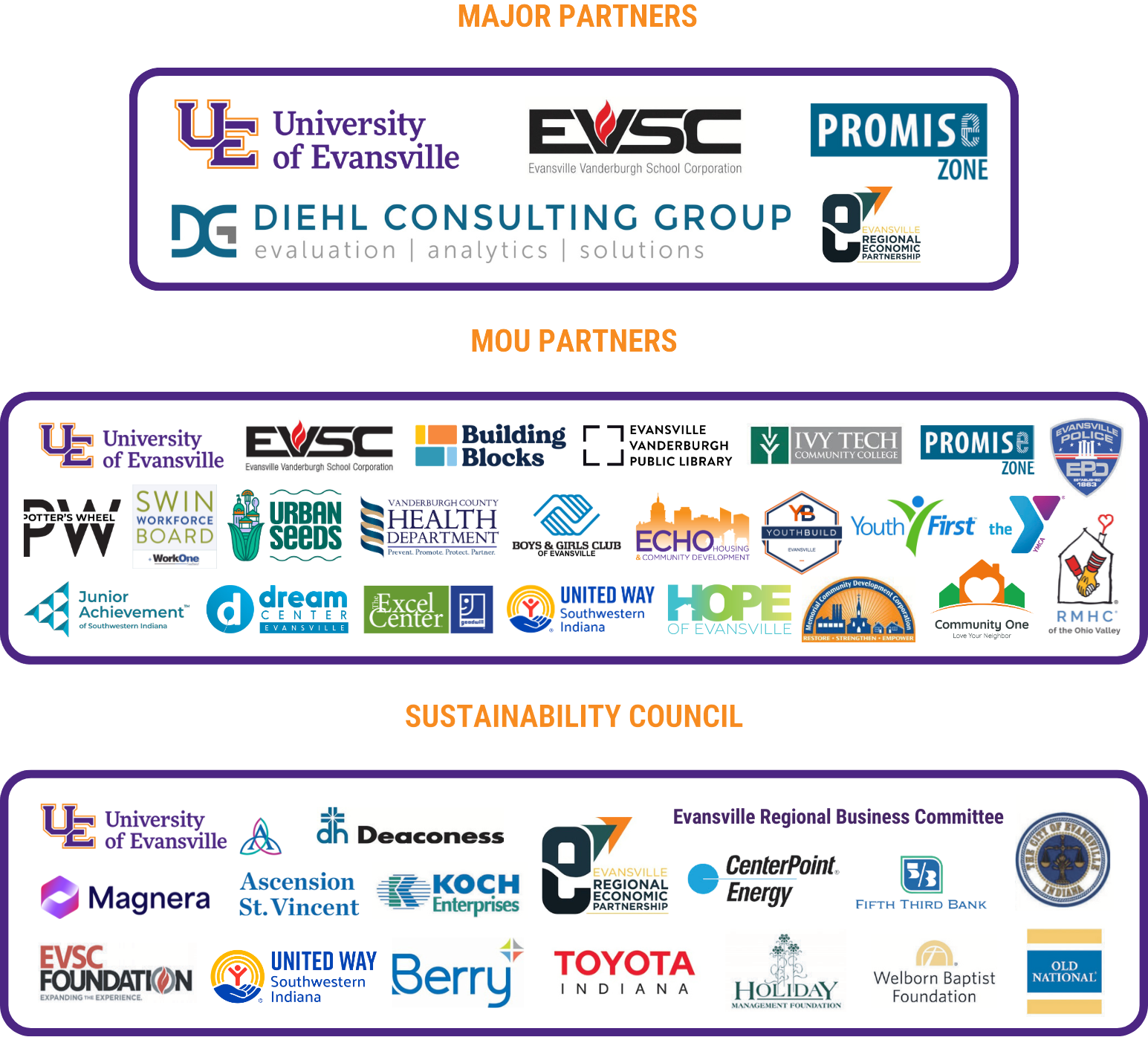
Our Journey
Building the Evansville Promise Neighborhood
The story of Evansville Promise Neighborhood (EPN) began in March 2023 when UE was awarded a $30 million grant to create lasting change in the community. But before the work could truly begin, critical steps needed to be taken to lay a strong foundation.
That summer, the CIC launched a search for a dedicated EPN team, successfully onboarding key staff by August 2023. With the team in place and budget approval secured, the first major task was to formalize partnerships. The Memorandum of Understanding (MOU) process with all 22 community partners became top priority, ensuring that resources could be distributed effectively to those on the ground.
By September 2023, finalizing the MOUs was in full swing. One by one, the EPN team met with each partner, securing their commitment and signing agreements that would pave the way for real impact. Meanwhile, momentum continued to build. October 2023 brought a visit from the Westat Technical Assistance team, reinforcing an alignment with national best practices. At the same time, the team secured Institutional Review Board (IRB) approval for the evaluation plan and EPN consent forms, a critical step in engaging families and gathering data to drive the work forward.
As Year One came to a close, the team launched the EPN consent enrollment process. At the same time, for the first time since the grant was awarded, all 23 community partners came together under one roof, reinforcing a shared vision for the future, at an All Partner Meeting in March 2024.
Laying the Foundation for Change
With the groundwork in place, Year Two of the grant saw the real work take off.
In April 2024, the EPN team established the EPN Pipeline Workgroups, bringing together partners to meet monthly for each pipeline workgroup and collaborating on targeted focus areas. Shortly after, in May 2024, all 22 MOUs were fully executed.
The team simultaneously launched the Promise Community Survey, which ran through August 2024, to collect the final sets of baseline data. As summer progressed, Goodwill's The Excel Center opened its doors in August 2024, expanding access to education for adults to obtain their Indiana Core 40 high school diploma.
That same month, new partnerships flourished. A collaboration between Urban Seeds and ECHO Housing led to the creation of a produce stand in Jacobsville, improving the access of fresh fruits and vegetables to local families. Meanwhile, Nourish, part of Urban Seeds, expanded its impact by opening a second pick-up location in Tepe Park in partnership with Community One and Tepe Park.
August also saw the success of the Kindergarten Blitz, an event that brought together multiple community partners to visit the homes of families with incoming kindergartners of EPN focus schools.
In September 2024, we celebrated our first major EPN community event—Pipeline 1 launched Little Kids, Big Promise, a resource fair designed to connect families with young children to resources.
Then in October 2024, EVSC hosted a Curriculum Workshop for partners delivering after-school programs and wraparound care, strengthening alignment between schools and community organizations. Just a month later, in November 2024, one of the focus schools reached 100 percent EPN Consent Enrollment.
Expanding Impact
As the team moved into 2025, new programs and initiatives continued to take shape.
In March 2025, EVPL launched their Baby Bundle Explorer Kits, providing families with early learning tools to nurture literacy from birth. That same month, EPN hosted its first-ever Essential Staff Training, bringing together over 130 staff members from partner organizations to strengthen their ability to provide resources for the children and families they work with every day.
In April 2025, EPN hosted its second annual All-Partner Meeting, bringing together our EPN partners to reflect, celebrate, and plan for the future under the theme of Synergy. This marked a new chapter for EPN, transitioning from foundational efforts to deepened collaboration and strategic action. Partners also participated in “The Ideal Conditions for Success,” a timeline activity to help shape the year ahead. Each Pipeline Workgroup is now forming a Task Force to create a Collaborative Action Plan, designed to define a shared vision and direction for their work.
EPN’s All-Partner Meeting wasn’t just a celebration; it was a catalyst for deeper alignment, stronger relationships, and sustained momentum as we move forward together.
Our Team

Derek McKillop
Director, Evansville Promise Neighborhood
Room 270, Ridgway University Center
812-488-5704
epn@evansville.edu

Lisa Allen
Program Coordinator, Evansville Promise Neighborhood
Room 270, Ridgway University Center
812-488-5701
la156@evansville.edu

Irais Ibarra
Marketing Coordinator, Evansville Promise Neighborhood
Room 270, Ridgway University Center
812-488-5705
ii18@evansville.edu

Dr. Stephanie Doneske
Data & Program Evaluation Manager, Evansville Promise Neighborhood
Room 270, Ridgway University Center
812-488-5702
sd285@evansville.edu
EPN Pipeline Workgroups
1. Early Health and Kindergarten Readiness
This workgroup equips young learners with essential skills by providing early health services and supporting programs that prepare children for kindergarten. The goal is to ensure every child begins their educational journey with a strong foundation.
EPN Partners in this Pipeline:
- Vanderburgh County Health Department
- Building Blocks
- Evansville Vanderburgh School Corporation
- United Way of Southwestern Indiana
- Ronald McDonald House Charities
- Evansville Vanderburgh Public Library
2. Student Achievement and Success
Maximizing student potential to improve educational outcomes by promoting academic excellence, this workgroup addresses individual learning needs, provides enrichment opportunities, and fosters a supportive environment that encourages engagement and achievement for every child.
EPN Partners in this Pipeline:
- Evansville Vanderburgh School Corporation
- YMCA of Southwestern Indiana, Inc.
- Youth First
- Potter’s Wheel
- Dream Center Evansville
- Boys and Girls Club of Evansville
- Memorial Community Development Corporation
- University of Evansville
- Urban Seeds
3: Postsecondary Access, Success, and Workforce Readiness
This workgroup prepares students for future success beyond high school by providing guidance, resources, and opportunities to explore higher education and career paths, equipping them with the skills and knowledge needed to excel in a competitive job market and achieve long-term career goals.
EPN Partners in this Pipeline:
- Southwest Indiana Workforce Board
- YouthBuild
- University of Evansville
- Evansville Vanderburgh School Corporation
- Ivy Tech Community College – Evansville
- YMCA of Southwestern Indiana, Inc.
- Junior Achievement of Southwestern Indiana
4. Neighborhood and Community Revitalization
Revitalizing neighborhoods and strengthening community bonds, this workgroup enhances local infrastructure, fosters community engagement, and implements initiatives that improve the overall quality of life, contributing to a vibrant, connected, and resilient community.
EPN Partners in this Pipeline:
- Evansville Police Department
- Community One
- Dream Center Evansville
- University of Evansville
- Urban Seeds
- ECHO Housing
- Boys and Girls Club of Evansville
- HOPE of Evansville
- YMCA of Southwestern Indiana, Inc.
Office Phone
812-488-2455
Office Email
epn@evansville.edu
Office Location
Rooms 270-274, Ridgway University Center
